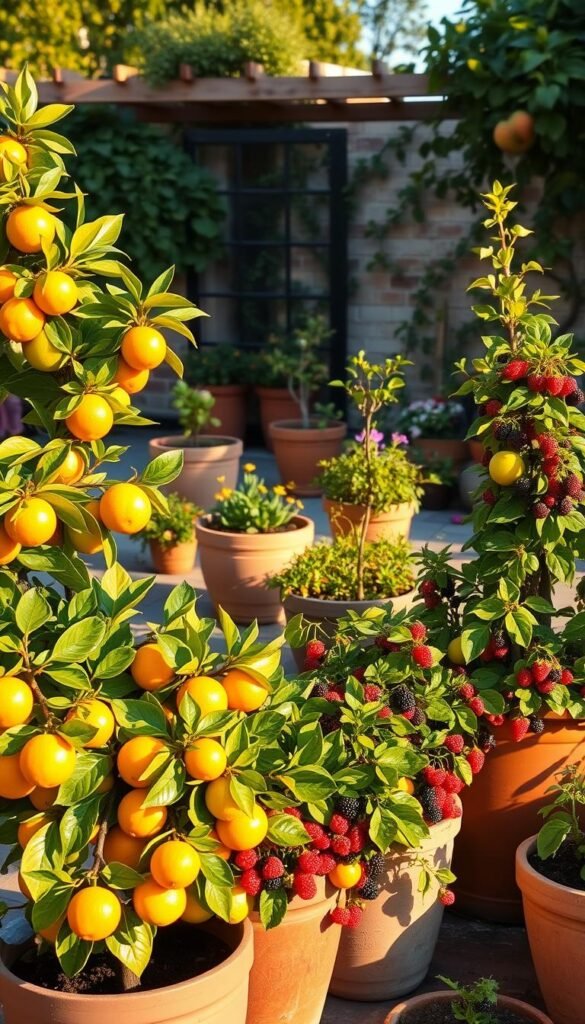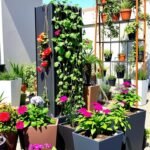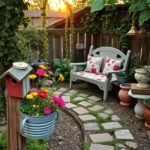Imagine plucking sun-ripened lemons or juicy strawberries from your own mini orchard—no backyard required. Growing edible plants in pots lets you enjoy fresh flavors even in tight spaces like balconies, patios, or urban rooftops. Whether you’re renting, downsizing, or simply craving homegrown snacks, this approach adapts to your lifestyle.
You don’t need acres of land to cultivate vibrant citrus trees or berry bushes. Modern techniques let you nurture productive plants in movable homes, giving you control over sunlight, soil quality, and protection from frost. Want to chase the sun? Just roll your potted lime tree to a brighter spot. Moving apartments? Your blueberry shrub can come along.
This guide reveals how to pick compact varieties that thrive in confined areas and share tips for maximizing yields. You’ll learn why portable gardens are perfect for renters and city dwellers—offering flexibility without sacrificing flavor. We’ll cover everything from selecting the right-sized planters to creating ideal growing conditions year-round.
Ready to transform your outdoor area into a fruitful oasis? Let’s dig into the essentials of raising delicious, space-smart crops that fit your life as perfectly as they fit your patio.
Choosing the Right Containers for Your Patio Garden
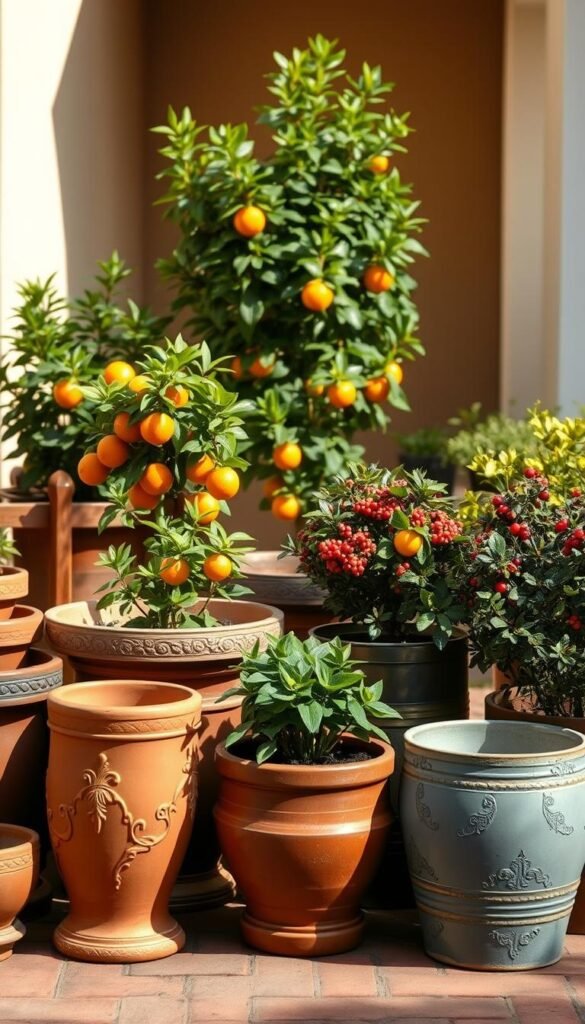
Your plant’s home matters more than you think. The perfect vessel balances practicality with style while keeping roots healthy. Let’s explore how to match your growing ambitions with durable, functional designs.
Materials, Drainage, and Durability
Not all planters are created equal. Lightweight plastic works well for rearranging sun-chasing crops but cracks after a few seasons. Glazed ceramic pots lock in moisture for thirsty berries, while porous terra cotta helps citrus roots breathe. Heavy stone options stay put during storms but demand permanent placement.
| Material | Pros | Cons | Best For |
|---|---|---|---|
| Plastic | Affordable, portable | Fades/cracks in sun | New gardeners |
| Glazed Ceramic | Retains moisture, stylish | Heavy, pricey | Berry bushes |
| Unglazed Clay | Root aeration | Dries out fast | Citrus trees |
| Stone/Concrete | Wind-resistant | Unmovable | Permanent setups |
Determining the Perfect Container Size
Dwarf fruit trees need elbow room. Aim for planters at least 20″ wide and 24″ deep—this gives roots space to stretch without drowning in excess soil. Oversized pots waste water, while cramped ones stunt growth.
Always check drainage! Three pencil-sized holes prevent soggy roots. Elevate pots on casters or risers to stop escape attempts through bottom gaps. Remember: Your planter is a long-term investment—quality materials outlast cheap replacements.
Selecting Fruit Varieties Ideal for Container Gardening
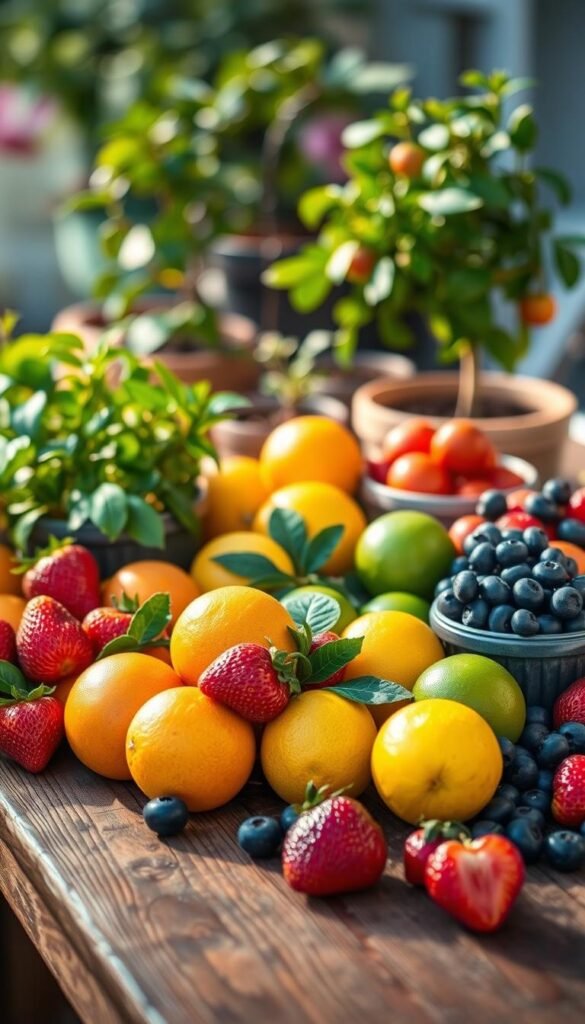
Who says you need a sprawling yard to enjoy fresh-picked sweetness right outside your door? The secret lies in choosing plants that thrive in confined spaces while delivering full-flavored results. Let’s explore your tastiest options.
Citrus Trees, Berries, and Dwarf Fruit Options
Zesty lemons and juicy oranges aren’t just for Florida groves. Compact citrus varieties burst into fragrant white blooms before producing fruits that outshine supermarket finds. Pair them with everbearing strawberries tumbling from hanging baskets for instant curb appeal.
Cold-climate gardeners rejoice: honeyberries survive -50°F winters in pots when planted in pairs. Warm regions? Try dwarf bananas that double as tropical houseplants come winter. Check out these space-smart superstars:
| Plant Type | Space Needed | Unique Perk |
|---|---|---|
| Columnar Apples | 2′ width | Full-sized fruit |
| Dwarf Figs | 15-gallon pot | Low maintenance |
| Goji Berries | 10″ depth | First-year harvest |
| Bushel & Berry® | Hanging basket | Thornless canes |
Adapting Variety to Your Micro-Climate
Your patio’s sun exposure dictates success. Full-south exposure? Olive trees soak up heat while needing minimal water. Shady nook? Try red currant bushes that fruit in dappled light.
Rotate pots seasonally—citrus loves summer sun but appreciates winter shelter. Northerners can grow peaches using columnar varieties against warm walls. Remember: matching plants to your conditions means less work, more fruit.
Planning and Optimizing Your Small Garden Space

Turn your limited area into a productive paradise by mastering light patterns and spatial relationships. Successful growers know every square foot counts when cultivating edible treasures. Track where shadows fall during morning and afternoon—this reveals prime real estate for sun-loving plants.
Smart Layouts for Bountiful Harvests
Citrus trees become heavy producers when given 8+ hours of direct light. Use a sun-tracking app for three days to map your brightest zones. Place mobile planters on wheeled stands to follow shifting rays as seasons change.
Reflective surfaces amplify available light. Position pots near white walls or aluminum siding to bounce extra photons onto leaves. This trick helps northern growers ripen figs faster and boosts berry yields by 20%.
| Placement Strategy | Space Saved | Light Gain |
|---|---|---|
| Vertical trellises | 65% floor area | +2 hours |
| Rotating stands | N/A | +3 hours |
| Wall planters | 80% floor area | +1.5 hours |
| Grouped containers | 30% floor area | +15% intensity |
Keep trees under 6 feet tall for easy harvesting. Birds steal fruits from upper branches you can’t reach. Dwarf varieties like ‘Improved Meyer’ lemon stay manageable while producing full-sized fruit.
Create microclimates by clustering pots near heat-retaining surfaces. Brick walls release stored warmth at night, protecting tender plants. Leave 18″ between containers for air flow—this prevents mold while maximizing your growing zone.
Essential Soil, Nutrients, and Watering Practices
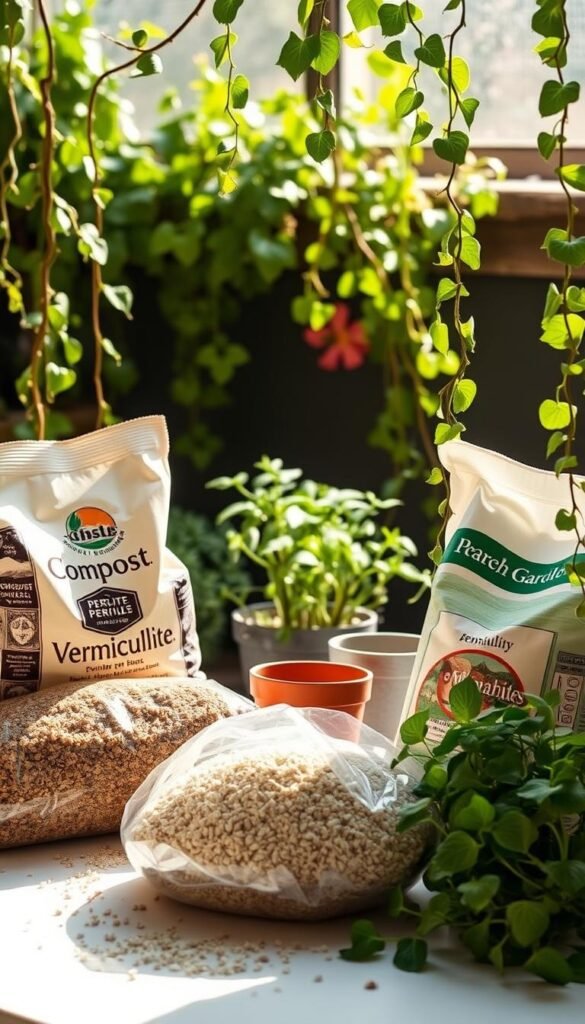
Your potted plants depend entirely on what you provide below the surface. Unlike garden beds, confined roots can’t search for resources—they need perfect conditions from day one. Master these elements to keep your edible treasures thriving year after year.
Crafting the Ultimate Growing Medium
Skip heavy backyard dirt—it suffocates roots in confined spaces. The magic formula combines drainage and moisture retention. Mix four parts aged pine bark with one part coconut coir for citrus trees. This blend mimics their natural habitat while preventing waterlogging.
| Component | Purpose | Pro Tip |
|---|---|---|
| Aged Pine Bark | Drainage & air pockets | Shred to pencil-sized pieces |
| Coconut Coir | Moisture retention | Add gypsum to balance sodium |
| Perlite | Prevents compaction | Use 10% for berry bushes |
| Compost | Slow-release food | Limit to 20% of total mix |
Mastering Hydration Cycles
Poke your finger into the soil daily during heat waves—if the top two inches feel dry, it’s drink time. Morning watering prevents evaporation loss. Always empty saucers after 30 minutes to avoid root rot.
Collect rainwater in barrels for happier plants. Its natural acidity helps nutrients stay available longer. When using tap water, let it sit overnight to dissipate chlorine.
Feed with 12-6-6 slow-release granules every three months. These time-released pellets withstand frequent watering better than liquid options. For more container gardening basics, check research-backed guides from agricultural experts.
Managing Seasonal Changes and Weather Conditions
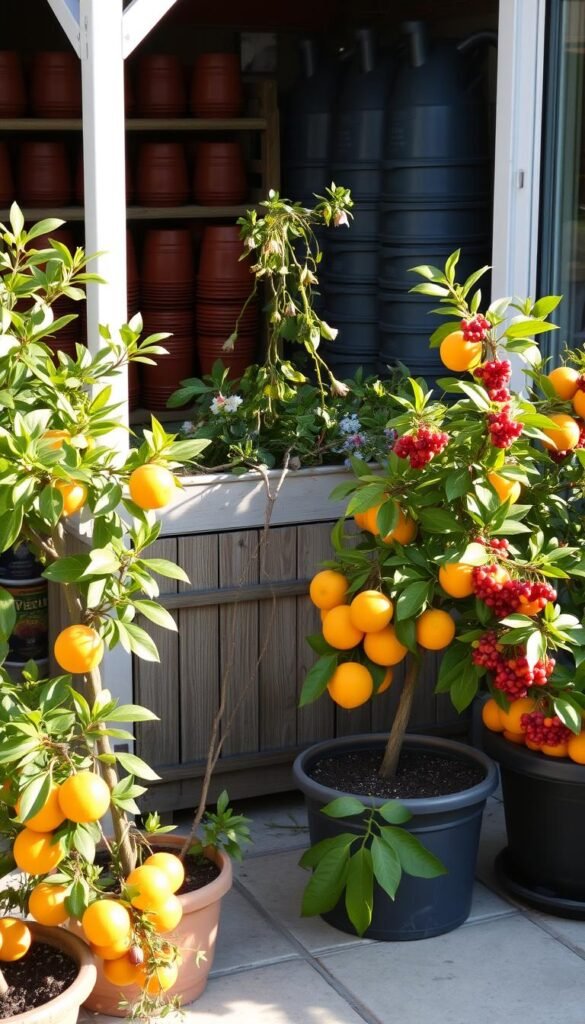
Ever wonder how your potted plants handle extreme weather? Smart seasonal adjustments keep your harvests coming year-round. Let’s explore simple strategies to protect your edible treasures from frosty nights and scorching afternoons.
Winter Protection and Indoor Shifts
When temperatures dip below 25°F, citrus trees need cozy shelter. Move them to south-facing windows where they’ll soak up winter sun. Maintain 55-65°F indoor conditions for happy plants—a humidifier prevents leaf drop in dry heated air.
Wipe leaves monthly with damp cloths. This boosts photosynthesis and stops spider mites from setting up camp. Group plants on pebble trays filled with water for extra humidity without wet roots.
Summer Care and Adjustments
Heat waves demand quick action. Water berry bushes at dawn and dusk during 90°F+ spells. Use shade cloth during midday to prevent leaf scorch. Rotate pots weekly for even sun exposure.
| Season | Key Challenges | Smart Solutions | Essential Tools |
|---|---|---|---|
| Winter | Freezing temperatures | Indoor relocation | Plant dollies |
| Summer | Dehydration risk | Twice-daily watering | Moisture meters |
| Spring/Fall | Sudden storms | Mobile shelters | Rolling bases |
Remember: Your plants’ mobility lets you dodge hail and frost. Keep casters under heavy pots for quick moves. Store protective covers and thermal blankets where you can grab them fast when weather apps scream “alert!”
Pruning and Maintaining Healthy Growth
Keeping your potted trees thriving requires smart shaping from the start. Unlike their garden-grown cousins, these plants need intentional care to stay compact and productive. Let’s explore how to guide their development without stunting their potential.
Shaping Young Plants for Success
Start pruning when your fruit trees are knee-high. Remove crossing branches early to create an open structure. Focus on trimming 20% of new growth annually—this encourages fruiting wood without shocking the plant.
Root Care for Long-Term Vitality
Every 2-3 years, gently lift trees from their pots. Trim circling roots and refresh the soil. This prevents strangulation and gives roots space to breathe. Healthy roots mean happier plants that produce sweeter harvests over time.
Remember: Never hack mature specimens down to size. Work with your tree’s natural shape instead of against it. With consistent care, your green companions can flourish for decades—or transition smoothly to garden beds when you’re ready.

